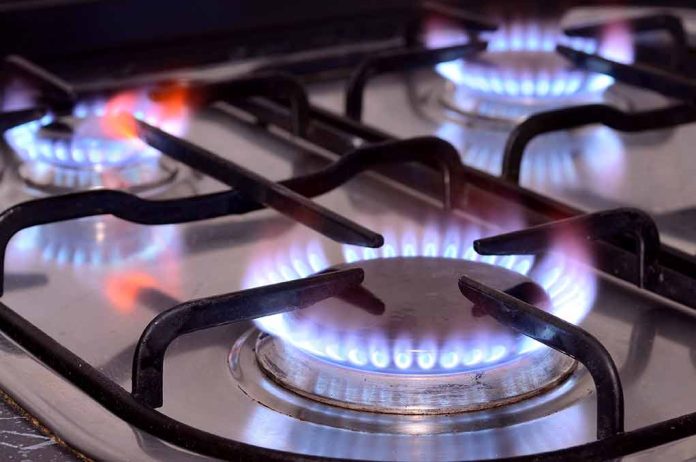
At a Glance
- California bill proposes warning labels on gas stoves about harmful emissions
- Gas stoves emit toxic gases like carbon monoxide and formaldehyde, even when off
- Research links gas stove emissions to respiratory issues and other health problems
- Industry groups oppose the bill, arguing all cooking methods generate pollutants
California’s Push for Gas Stove Warning Labels
California lawmakers are advancing a bill that would require gas stoves to carry warning labels about harmful emissions and proper ventilation. The proposed legislation aims to inform consumers about potential health risks associated with gas stove use, including the release of nitrogen dioxide, carbon monoxide, and benzene at levels that could be harmful to human health.
The bill, introduced by Democratic Assemblymember Gail Pellerin, has already made progress in the California Assembly and could be passed later this year. If enacted, it would mandate that gas stoves bear conspicuous adhesive labels warning about air pollutants and advising on proper ventilation to reduce exposure risks.
“Properly informed consumers will protect their families’ health — whether by avoiding gas stoves or using proper ventilation. Gas stove warning labels are a simple step that CA can take to empower families to protect their health.” @AsmGailPellerinhttps://t.co/cTIK5bAo54
— Environment California (@EnvCalifornia) August 2, 2024
Health Concerns Driving the Initiative
The push for warning labels comes in response to growing research highlighting the potential health hazards of gas stoves. Studies have linked gas stove emissions to various health issues, including respiratory problems, asthma, and even certain cancers. A Stanford study found that gas stoves contribute to about 19,000 adult deaths annually and increase long-term nitrogen dioxide exposure.
The Environmental Protection Agency and World Health Organization have also linked gas stoves to respiratory illnesses, cardiovascular problems, and other health conditions. Notably, a 2022 study attributed 12.7% of childhood asthma cases to gas stove use, raising concerns about the long-term impact on children’s health.
Industry Opposition and Consumer Awareness
Despite the growing body of evidence, industry groups oppose the California bill. They argue that all forms of cooking generate air pollutants and that additional labels won’t effectively address overall indoor air quality concerns. Some critics view the proposed legislation as an overreach of government authority into consumer choice.
“All forms of cooking, regardless of heat source, generate air pollutants, especially at high temperatures,” Jill Notini, spokesperson for the Association of Home Appliance Manufacturers, told the Associated Press. “Adding yet another label to gas cooking products does not address the overall concern of indoor air quality while cooking.”
However, consumer advocates argue that many people are unaware of the potential risks associated with gas stoves. A recent survey conducted by the U.S. Public Interest Research Group Education Fund found that major retailers often fail to inform customers about gas stove health concerns or necessary safety measures.
The Path Forward
As the debate continues, California’s proposed legislation represents a broader trend towards increased scrutiny of household appliances and their environmental impact. While some view the warning labels as a necessary step towards public health protection, others see it as an infringement on personal choice.
Ultimately, the outcome of this legislative effort may set a precedent for how states balance public health concerns with consumer preferences in the ongoing transition towards cleaner, more sustainable energy solutions.
Sources
Gas Stove Warning in California
Gas stoves are a health problem. Could warning labels help?
Why Californians need gas stove health warning labels
California moves closer to requiring new pollutant-warning labels for gas stoves
California reignites war on gas stoves with new bill requiring warning labels













